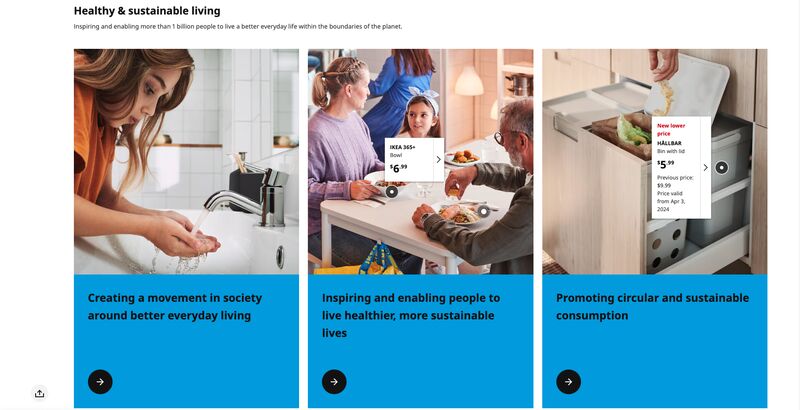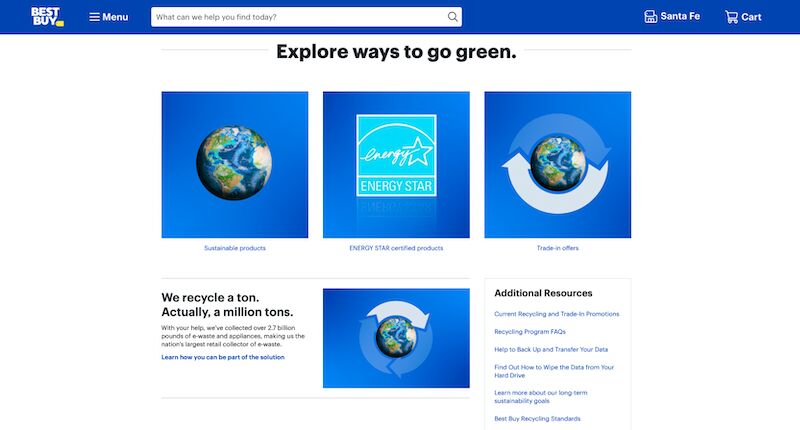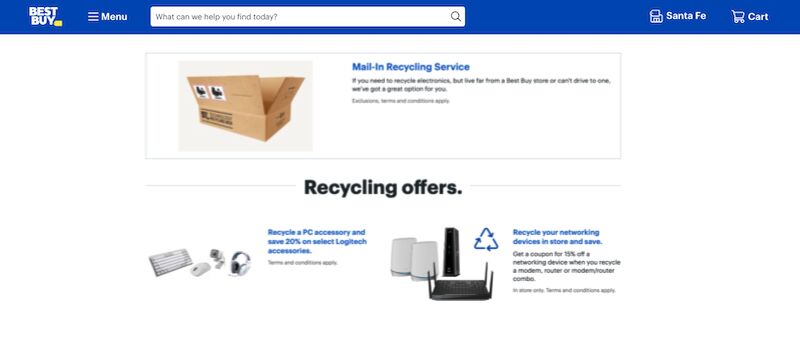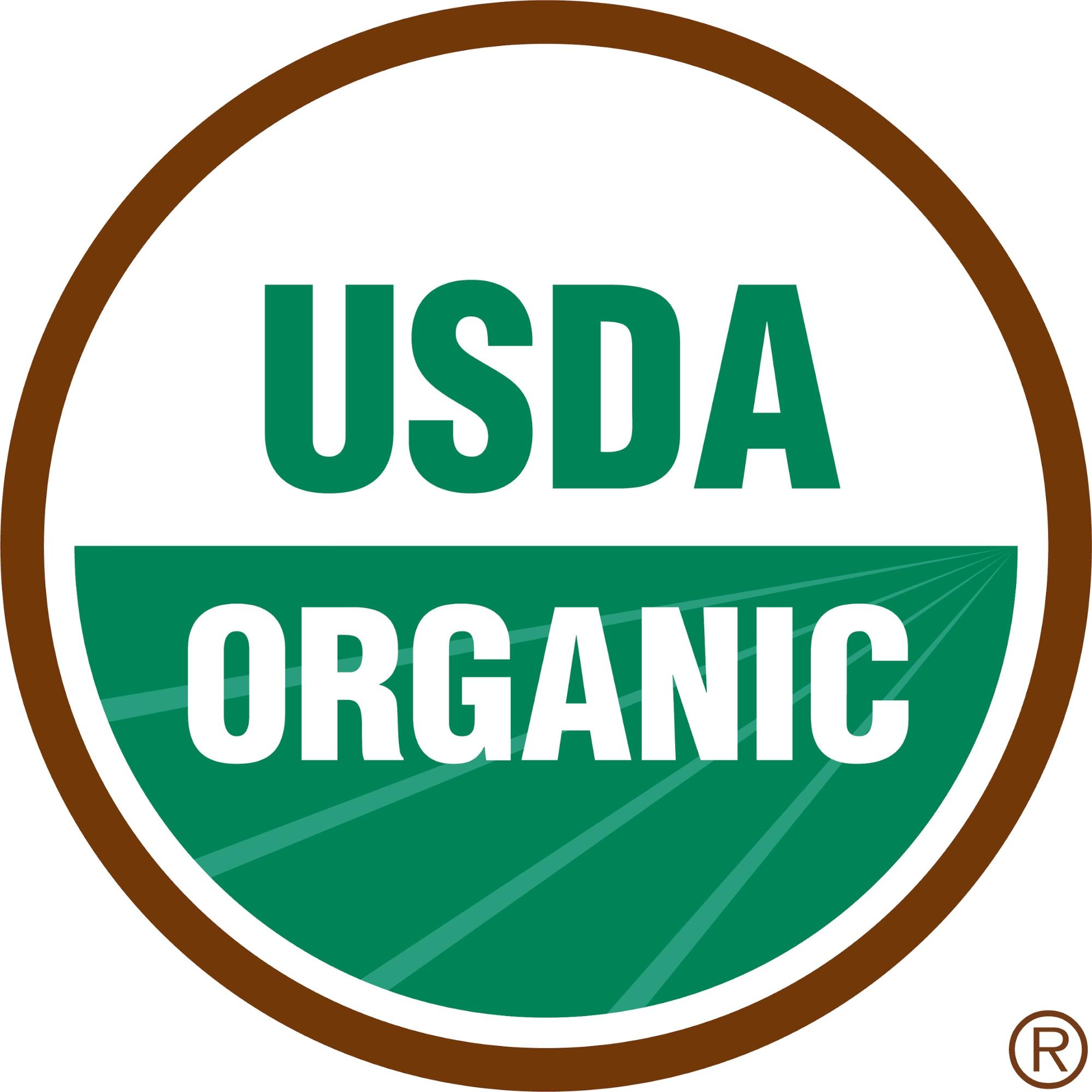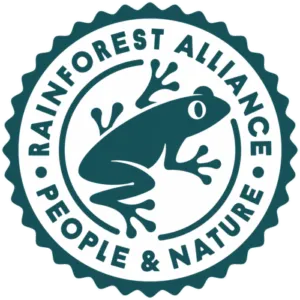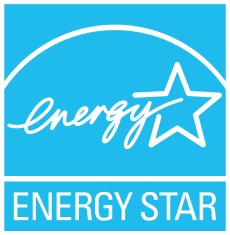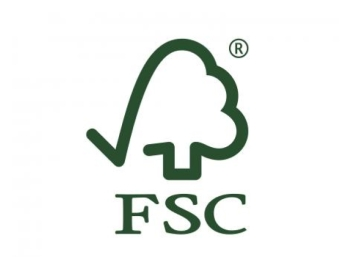Sustainable marketing (also known as green or sustainability marketing) promotes environmentally and socially responsible products, services, and practices. Brands focused on sustainable products or services naturally develop marketing that highlights their direct environmental and social benefits. But brands not producing actual green products and services—just trying to green their operations—can still apply some of these principles.
As a small business, the benefits of promoting your sustainability efforts to your customers, employees, and stakeholders can be significant and rewarding. But these efforts should be authentic, or they’re less than useless—they can backfire and harm your brand.
In this guide, we’ll discuss the steps to creating a more sustainable business and explore key areas of sustainability strategy required to practice sustainable marketing truthfully, effectively, and profitably. We’ll share marketing sustainability examples that show how you can effectively and transparently communicate your commitment to being greener to your customers, vendors, and employees, and how it can benefit your brand.
Sustainability: What Are the Issues?
Sustainability is a practice focused on transforming modern industrial society to ensure the integrity of natural resources and climate stability for future generations. In business, this means contributing positively towards reducing waste and greenhouse gas emissions and improving biodiversity and the overall health of the ecology and society.
While many of these issues are based on science—climate change, resource depletion, toxic pollution, and the loss of wildlife habitat and biodiversity—opinions vary widely on how to achieve these goals and their urgency. As an entrepreneur promoting your business in your community or a wider marketplace, understanding your target market and customers’ concerns is key to developing a strategy that demonstrates the right level of commitment to your values.
According to Roundup.org, 78% of consumers feel that sustainability is important in purchase decisions. 62% of people state they “always or often” seek products to purchase because of this, and 55% of consumers are willing to pay more for eco-friendly brands. Sustainability-focused consumers abound, but how do you reach and engage them? The key is integrating your operations, product development, and communication so you are truthful—and effective—in your green marketing efforts.
Why Make Your Business Greener?
Sustainable marketing strategies start with measures that are not directly related to marketing per se. Sustainability marketing starts with an overall operations strategy that lays the foundation and validates your green marketing strategy. You can’t talk to customers about your new recycled products, for example, unless you actually used recycled materials. Only then can you promote their environmental value.
Along with addressing the needs and concerns of consumers, helping you become more resource- and cost-efficient, and allowing you to leave a positive impact in your community and the world, there are major reasons to develop a sustainable marketing strategy for your business: it increases employee motivation and retention and builds brand value.
Employee Motivation & Retention
Engaging your employees in setting and achieving sustainability goals has proved to be highly motivating and inspiring and may improve employee retention. According to the Financial Times, approximately 20% of younger staff say they have changed jobs or industries because of environmental concerns. A slightly higher percentage say they plan to in the future, and north of 70% say that green credentials and policies matter when they are job hunting.
Including team members in learning, brainstorming, and goal-setting around sustainability helps create a company culture of innovation and inclusivity. Delegating specific areas of responsibility, such as putting one team member in charge of recycling or composting and another for energy conservation, can allow everyone on the team to champion the program, gather feedback, and suggest improvements.
To make it even more worthwhile, consider setting a baseline and KPIs and creating an employee incentive program for energy and material savings for your team. Use the savings to throw an employee appreciation event or another team member a perk everyone can enjoy. If significant savings result, consider giving actual bonuses to your employees.
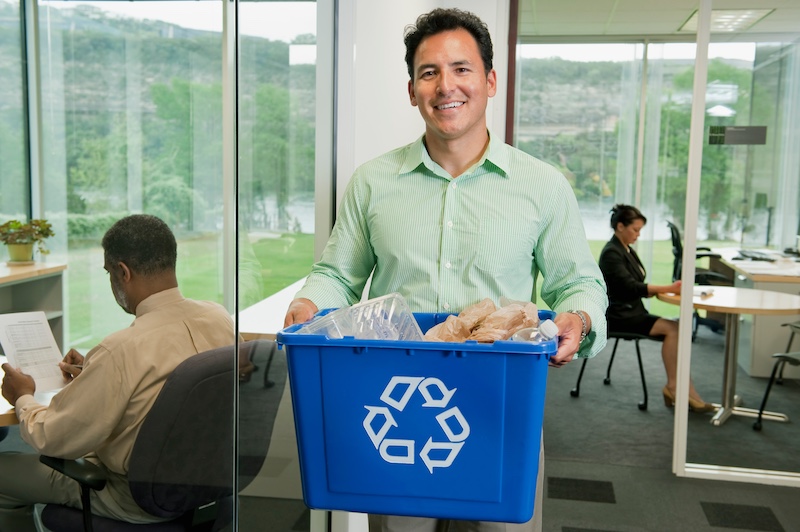
Sharing small responsibilities for creating and running sustainability initiatives keeps employees engaged and ensures ongoing implementation and feedback.
Sustainability & Brand Value
A recent study by NielsenIQ found that 78% of US consumers say a sustainable lifestyle is important to them. In 2023, McKinsey and Nielsen IQ’s joint follow-up study on actual sales growth of over 600,000 retail product SKUs with Environmental, Social, and Governance (ESG) claims showed an 8% advantage in sales growth over non-ESG products.
ESG also positively affects brand value: in the Sustainability BrandZ Index developed by consulting firm Kantar, the value of Kantar’s top-rated Sustainability BrandZ brands grew by 31% in 2021, compared with 23% across the top 100 brands overall, reflecting an incidentally equal increase in brand value by 8%.
Sustainability is just good business: not only do you become more cost-effective in your use of resources, but it can have a material long-term impact on your brand value if you walk your talk and effectively communicate this value to your stakeholders.
What Is ESG?
ESG stands for environmental, social, and governance. It’s a framework for measuring a company’s performance on these three pillars. Though often used as a term with investors, ESG performance is sometimes reported to vendors, partners, and customers as well.
For small businesses pursuing greater sustainability, formal ESG measurement methodologies may be overly complex, but simplified versions of these can be applied to the business, tracked, and reported to important stakeholders.
How to Become More Sustainable
Establish a Green Mission, Vision & Values
A powerful part of creating your brand strategy is coming together with your business partners and employees to craft your company mission, vision, and values. This includes the principles you stand for and your promises to your employees and customers. These principles might be about your commitment to sustainability, equity, charity, and other positive social values.
Sharing your values with customers, often through your brand story, can be a large part of your sustainable marketing strategy. Making these values part of your interactions with employees and customers is one way you bring them to life. Another way is to bake it into your products like IKEA has done with their products, such as recycling bins and reusable water bottles, and share with customers about their eco-benefits and everyday utility.
Get a Sustainability Audit
The first step in implementing sustainability is to find out how sustainable your business is. Some companies and consultants specialize in energy and sustainability audits and can help you get a baseline from which you can progress.
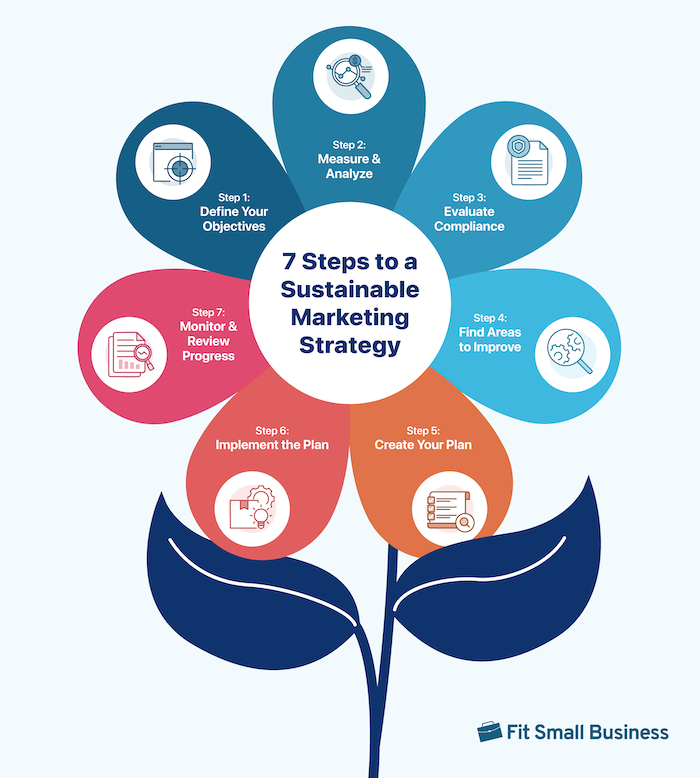
There are essentially seven steps in the sustainability audit process:
- Determine measurement scope and objectives. How far do you measure? Energy, water, material use, reuse, and waste are typical starting points, but social and workplace equity are also considered fair game for measurement.
- Measure and analyze. Gather data on the areas of measurement you have scoped out. Collect this data in a spreadsheet where it can be tracked over time.
- Evaluate compliance and best practices. Look at your alignment with local, state, and federal regulations and how you compare with other companies tackling similar issues. This helps set a baseline for improvement.
- Find areas of improvement. What’s the low-hanging fruit? Identify and rank areas where you can make an immediate impact. Switching from plastic water bottles to a water cooler is one way to reduce waste. Another simple action is to turn off computers and printers at night.
- Create your sustainability plan. Gather your objectives, data, and areas of improvement into a comprehensive plan with feedback from stakeholders and shareable within your company.
- Put your plan into action. Enlist employees, share your plan, set achievable goals, timelines, and KPIs, and assign responsibilities for carrying it out and keeping track.
- Monitor and review progress. Set a regular cadence for review of the plan with staff. Recognize successes and areas for improvement. Report to stakeholders where appropriate.
Save Energy, Water & Materials
If you’re a small business owner, your utilities, including electricity, gas, and water, may be a significant portion of your operating expenses. Reducing these expenses frees up capital for labor, reinvestment, or other important expenditures.
The US Environmental Protection Agency’s (EPA) Energy Star program says that small businesses spend more than $60 billion annually on energy. They also state that with strategic investments, entrepreneurs can cut their energy costs by 10%-30% without sacrifice. Reducing energy and material costs is one of the most fundamental and profitable measures a small business can undertake.
Here, green marketing can be used to inform both employees and customers about the importance of saving resources. Turning off unused lights and appliances or reducing printer paper and receipts may seem small, but they can lead to substantial long-term savings. Acquiring more fuel-efficient or EV vehicles for company transportation or delivery, especially when replacing these vehicles, is another quick win that could pay back quickly.
The EPA’s Waterwise certification can tell business owners which plumbing fixtures are more water-efficient when installing these in a place of business. This is especially impactful in hospitality establishments such as inns and hotels.
Recycle
Beyond material reduction, recycling and composting programs ensure the reuse of resources from waste created by the business. Donations of goods to local communities extend the life of goods and products more efficiently than just recycling them for raw materials. It also creates a positive social impact that you can talk about with your customers.
Recycling and compost programs for employees and customers require additional effort, education, and signage, but they send a clear signal that your brand is serious about environmental preservation. Offering special recycling programs, such as Best Buy’s e-waste recycling program, can attract more customers. Once there to recycle, customers often browse the store and find new products to purchase, and in some cases, Best Buy offers discounts in exchange for these old items.
Prioritize Sustainable Materials
After material recycling and energy reduction, a possible next step for small businesses on their sustainability journey may be materials for products or packaging from sustainable sources. This starts with evaluating the environmental standards of your suppliers to verify certifications or at least basic compliance with environmental laws. Some well-known certifications include FSC (Forest Stewardship Council) for lumber or paper, or Energy Star for appliances.
Alternative and innovative materials can bring additional value and greenness to your brand. Compostable bioplastic glasses and dinnerware are an easy offering for restaurants. Branding these items with your logo and an environmental benefits statement creates ongoing branding opportunities. Promotional products or swag, such as reusable water bottles or organic cotton t-shirts, enhance your brand by connecting directly with green values.
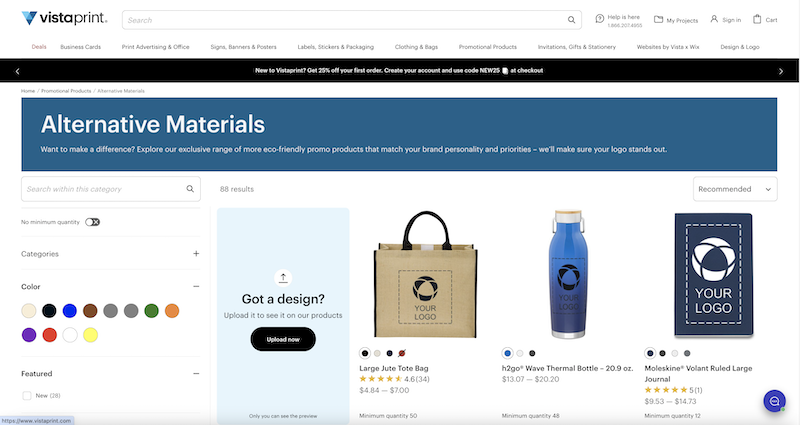
Promotional item companies such as VistaPrint offer a selection of alternative material promotional merchandise for environmentally conscious companies and their customers.
Truly innovative companies have committed to pursuing the most environmentally benign products possible. One of the best sustainable marketing campaigns comes from outdoor gear company Patagonia. They have effectively promoted using recycled plastic in its high-performance fabrics and combined these efforts with a take-back and recycling effort in their “Worn Wear” campaign.
Partnering with suppliers that offer innovative feedstocks for products, as Patagonia has, is a great way to amplify your environmental impact while bringing innovation to your brand. Greening materials, products, and the supply chain are particularly important for companies engaged in the retail industry.
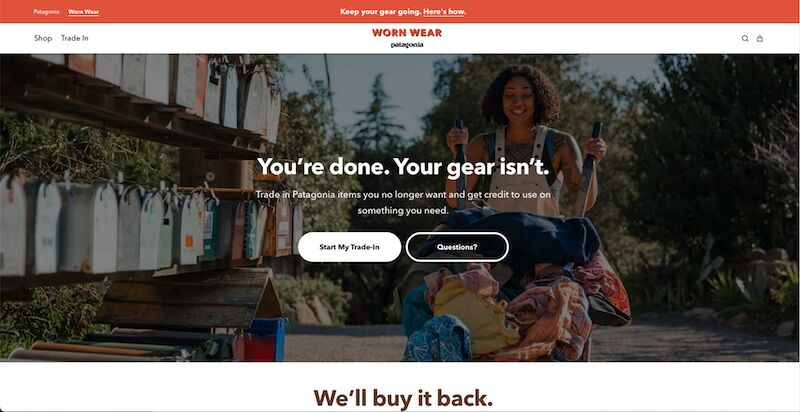
Patagonia’s take-back and recycling program is generous but creates long-term loyalty and customer value by bringing customers back to purchase new products at a discount earned from old ones.
How to Validate Your Green Credentials
Partner With Nonprofits to Advance Sustainability
Collaborating with an outside nonprofit organization is an excellent way to enhance sustainability in your business. This can take an arm’s length approach, such as donating a portion of the profits to support the work of a specific nonprofit that you sponsor. But it is also possible to create a closer partnership. Nonprofit environmental organizations focus day-in and day-out on sustainability, and can help you create and follow a roadmap for being more green.
With any for-profit and nonprofit partnership, there is always a delicate balance where an organization may come to rely to some degree on your sponsorship while needing to stay true to its core principles. Nonprofit organizations will want to ensure that they are making serious good faith efforts to move towards sustainability and may distance themselves or even turn against a company they see as disingenuous or greenwashing.
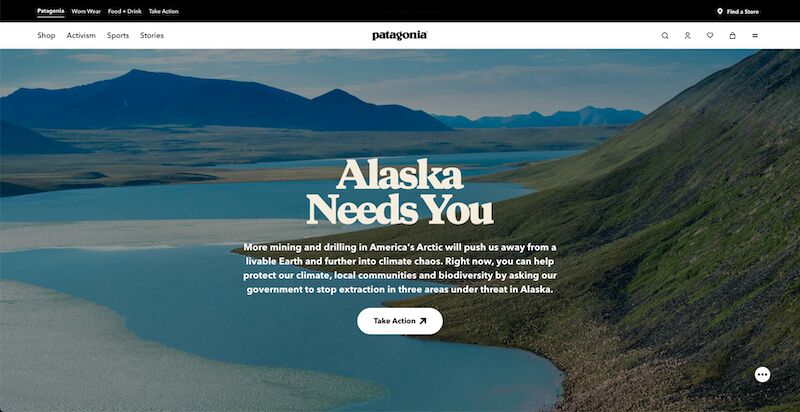
Patagonia is unique among global companies in not shying away from environmental activism and partnering with nonprofits, even when controversial. The depth of your commitment and focus of efforts depends on your values as a brand.
Both the small business and organization in such a partnership can actively promote the alliance to customers and members. This amplifies the positive impact of marketing efforts for both parties. Engaging in event marketing with partner organizations is a great way to build your brand, create relationships, and have a positive impact in the community, or even globally.
Apply for Industry & Product Certifications
Numerous industry and product certifications are available from environmental organizations that audit and certify companies on their ESG performance. Some are free, though many require a fairly extensive certification audit process that can incur a cost for your business.
These certifications potentially offer your business valuable access to consumers unavailable to noncertified companies and products. It also ensures that environmental claims are substantiated by third-party verification. USDA Organic certification is perhaps one of the best-known certifications, and the term “organic” cannot legally be used in marketing claims without it.
The table below shows some of the most recognized and respected environmental standards. Depending on your industry, there are numerous others to consider as you follow your path to higher green standards. Once certified, these seals of approval can and should be used in your marketing to demonstrate your commitment and performance as a green business.
Sustainability Goals & Claims at VistaPrint: A Case Study
The printing company VistaPrint, known for its high-quality and convenient marketing materials and swag, currently offers recycled, bamboo, hemp, and other sustainable printing options and publishes their public sustainability achievements targets on their website:
- 95% of their paper products are printed on paper certified to the highest standard of responsible forestry.
- 8.3% of total greenhouse emissions have been eliminated from its operations since FY19.
- VistaPrint is committed to become Carbon Neutral in 2040 following a 1.5ºC decarbonization pathway, exceeding the 2015 Paris Agreement.
Once you have established a roadmap for your company, publicly stating realistic, achievable goals such as these is a good way to signal your commitment, even if you are still working towards your goals.
Top Environmental Certifications
Sharing Your Green Goals & Accomplishments
Once you and your team have committed to your sustainability plan, sharing your goals and accomplishments is an important step in becoming accountable to stakeholders and realizing the reputational benefit of being green. You’ll want to share a sustainability message tailored to vendors, partners, and customers, depending on with whom you are speaking.
Communicate Sustainability to Employees
Share about employee sustainability efforts in your marketing, including your website and social media. Positive, fun social posts spotlighting employees who make your program run is a great way to give them kudos while bringing awareness to your efforts to be greener. Engaged employees may feel a sense of pride and motivation and are more likely to become brand ambassadors for your business.
Communicate Sustainability to Customers
With your sustainability plan in process, you can begin to share it with customers. Keep in mind that putting yourself forward as a “green business” exposes you to scrutiny. Good faith efforts to reach your goals are largely met with praise by customers. But falling significantly short or even abandoning your goals can open your business to accusations of “greenwashing.” ESG Certifications are a good way to reassure customers of your credibility.
Walking your talk becomes very important once you start down the green road to sustainability. If you do fail to meet important milestones, it’s not necessary to cry it from the rooftops: acknowledge any shortcomings in your internal and external communications to engage customers and discuss your goals to get back on track. Sustainability is not a destination—just like excellence or perfection, it’s a journey.
What Is Greenwashing?
Greenwashing is the practice of making exaggerated or false claims that a company’s products, services, or practices are environmentally friendly or sustainable. This can involve false, misleading, or vague claims or highlighting an insignificant green aspect of a product while ignoring its larger environmental impact.
The objective of greenwashing is to attract environmentally conscious consumers without making real efforts to reduce actual environmental harm caused by the company’s products or operations. Greenwashing misleads consumers into believing they are making green choices and undermines genuine sustainability efforts. Once discovered and publicized, often by consumer advocacy groups, activists, or nonprofits, such efforts can backfire spectacularly.
Green & Sustainable Marketing Strategies
Once you’ve made sustainability efforts an integral part of your philosophy, operations, or products, you can use various strategies and channels to communicate these to your customers.
Some examples include the following:
- Signage within your place of business can inform customers of recycling, water usage, or waste reduction programs.
- Your website might educate customers and the public on your efforts through your about page, mission and vision page, green programs page, or blog posts dedicated to your greening campaign.
- Social media could highlight employee efforts or special events or focus on partnerships with organizations advancing environmental causes dear to your business.
- Promotional offers might focus on product takeback and recycling with a discount for customers, much like the example of Patagonia’s Worn Wear program.
- Events are a great way to celebrate accomplishments or successful joint efforts with local charities or nonprofits, such as fundraisers.
Digital marketing is a key marketing strategy for any small business and includes your website, email marketing, social media, and paid advertising on websites, search engines, or social media. While your marketing efforts focus as always on the value of your products or services, you can also share about your business’s green values, philanthropy, partnerships, and greening initiatives.
Digital marketing can have a lower impact on the environment by using data centers that are more efficient or using green energy to power their servers, for example. Data centers worldwide are nearly 2%-4% of global electricity use, and the International Energy Agency (IEA) forecasts that this will more than double from 2022 to 2026, with AI playing a major role. To help combat this, Google set a goal to run on 24/7 carbon-free energy (CFE) on every grid where they operate by 2030.

Google Cloud and some other data center providers are striving to reduce energy use and emissions partly through the purchase of power from clean energy sources such as wind and solar.
If you do use physical means of sustainability advertising such as direct mail, choose the best possible printing options that include recycled content, tree-free paper, and nontoxic inks and ensure recyclability. While these may add some production cost, including messaging about the green characteristics of your printing and materials and asking customers to recycle them reinforces your green message.
An innovative example of green printing includes infusing compostable paper with mushroom spores or seeds for flowers and vegetables. After the consumer has taken in the message or consumed the packaging item, they can use these seeds for planting. Printing companies like VistaPrint offer a range of recycled and alternative paper stocks (such as hemp and bamboo) for business cards, postcards, and brochures and offer a wide range of marketing materials.
For semipermanent signage at a physical place of business, interior and exterior signage can be sourced out of greener materials such as recycled glass or metal, or reclaimed wood. Unlike plastics and vinyl, these materials can be more readily recycled as well. More transitory signage, such as promotions or events, can be made of recycled materials, such as paper or cardstocks.
Large signs and banners can also be produced out of biodegradable fabric, such as 100% cotton instead of vinyl. A good source for these is the company Backdrop Source, which also uses an eco-solvent printing process to minimize the use of toxic inks.
Community is a huge aspect of branding among environmentally minded consumers and advocates. Attending and hosting events is one of the best ways to connect with customers in general as part of an event marketing strategy and is invaluable for solidifying your sustainable brand. Several event types are key to sustainability marketing.
The advantages of workshops and seminars include learning about various aspects of sustainability, earning certifications, and connecting with other professionals, vendors, and potential customers. If you host events like these, you might identify expert guest speakers or instructors who are willing to attend to promote their consulting businesses or organizations.
The Small Business Association’s THRIVE Leadership Workshop Series is a good example of a workshop series.
There are several general and industry-specific trade events showcasing socially responsible and sustainable products and services. You can sponsor, host a booth, or just attend depending on your event marketing strategies.
Examples include the US Green Building Council’s Green Build Conference, the Green Biz Conference by the Trellis Group, and Climate Week NYC.
Many events now highlight issues around climate change as part and parcel of the festivities. Festival organizers focus on greening the event itself by minimizing single-use plastics, powering lights and sound systems with solar or wind energy, and encouraging attendees to carpool and use mass transit.
Sponsoring events like these in your local or wider business area is a great way to associate your brand with them and even connect with customers. Eventbrite is a great way to search out events in your area or wherever you are looking to expand awareness of your brand.
Some examples are the Deep Tropics electronic music festival in Nashville, TN, the Great Northern winter festival in Minneapolis, MN, and Farm Aid in Noblesville, IN.

Music festivals are increasingly focused on greening their events and promoting environmental and social causes and offer opportunities for small business sponsorship.
Public relations (PR) is a widely respected method for promoting the sustainability of your small and medium-sized business. By crafting a clear, authentic press release around your sustainable and social responsibility initiatives, you can differentiate yourself from competitors and connect with green consumers. PR can be used to announce recent sustainability certifications, new energy efficiency or waste reduction strategies, and partnerships with environmental organizations.
In conjunction with event marketing, press releases on green-focused or charitable events you are hosting or sponsoring may be considered more newsworthy than normal, nongreen events by local and national press. Like any event, a well-written, timely, and widely distributed press release is key to getting press coverage. Using a press release distribution service or one of the best local agencies for important or large events with significant investment is recommended.
Frequently Asked Questions (FAQs)
Undertaking a sustainability initiative for your business requires effort and sometimes upfront costs. Some of the costs associated with sustainability can be hard costs like upgrading light bulbs and equipment, purchasing more costly alternative materials for your product, and employee time for program implementation.
Getting an eco-audit and generating a strategic plan from the process is a way of discovering immediate savings opportunities, like basic energy use reductions, that can then fund more costly initiatives with a long-term financial benefit, such as converting to solar energy.
The goodwill created with customers, increased employee motivation, and brand value benefits are sometimes harder to realize and quantify than hard costs in the short term but are real nonetheless. Ultimately, many businesses that commit to this path will testify to its power to transform their business success.
There is no doubt that small business owners work very hard to build and run their companies daily. Taking time out of their daily routines to focus on greening the business takes a special effort. Data has shown, however, that the feelings of motivation and pride created in your team by participating in these efforts are worthwhile and give a higher meaning to your brand.
Programs like recycling or composting, for example, take a small extra effort over basic waste removal but feel better to employees than landfilling, and make a positive impression on customers. Requesting that employees reduce paper receipts by asking customers if they want them is another example of a small effort that actually can reduce costs significantly over time with a tiny extra effort.
Employee retention and development is a very important aspect of operating costs. Hiring and training is time-consuming and costly, and retaining good employees is extremely valuable. Making them part of your green company mission is at least one way to increase employee morale and loyalty.
Just as traditional marketing uses the 4Ps of product, price, place, and promotion, green marketing uses the same concepts with different emphasis on how to bring the values of sustainability to each:
Product
Minimize waste and use alternative materials with high recycled content and innovative materials, or make your products easily recyclable.
Price
Explain to consumers the price premium often associated with greener products in terms of their high quality and lower environmental footprint.
Place
Talk about how a lower carbon footprint and economic benefit to the community can be derived from locally sourced products.
Promotion
Share the benefits of greener products and services by advertising these benefits with methods that embody those values as well, such as using printed materials and ads on recycled or alternative paper products.
If you read the daily news about climate change, species extinction, or plastic waste in the oceans, it can often feel overwhelming and insurmountable. While the actions of government and large corporations are indispensable to solving these global problems, the publicly shared actions and commitment of small companies contribute to awareness of the issues and can make small but important changes up and downstream from your business.
For example, choosing greener products from your suppliers creates upstream demand for more of this alternative product over more wasteful alternatives and can reduce its costs. Innovative products that are also greener can inspire customers to seek out these alternatives in other areas of their lives.
Going about greening your company in an ethically driven, but financially strategic way, and sharing that success publicly inspires others in your industry and creates an impact far beyond your local community.
Bottom Line
Sustainable marketing does not exist in a vacuum apart from the values, objectives, and operational commitment of your business. Sustainability should become part of your company’s DNA over time. Authentic storytelling about your journey, including the bumps in the road and triumphs, will emerge organically (so to speak) out of this internalization of sustainability values.
Perfection is not the goal, but a clear set of goals, objectives, and achievements should go hand in hand with the public promotion of your green credentials. Partnerships with one or more reputable environmental nonprofits and environmental certifications will greatly enhance your green credentials and your place as an innovator in your local business community and build your brand reputation and loyalty with green-minded customers.
